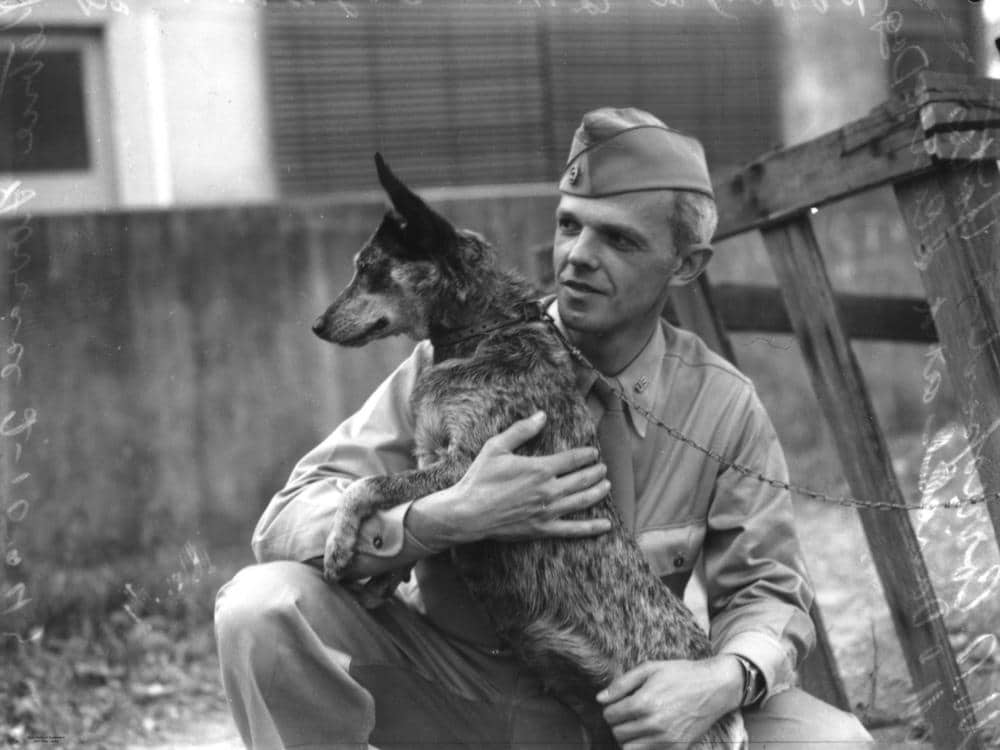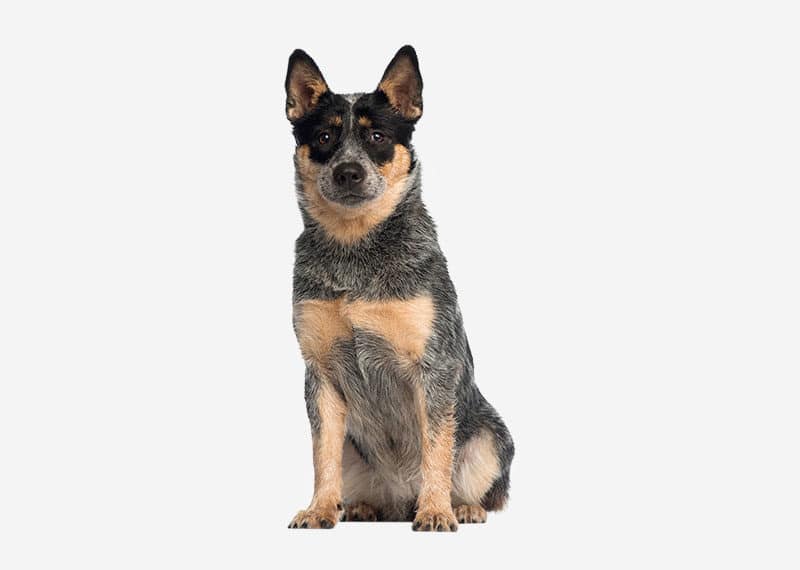The Australian Cattle Dog is a breed of herding dog originally developed in Australia for droving cattle over long distances across rough terrain. This breed is a medium-sized, short-coated dog that occurs in two main colour forms. It has either brown or black hair distributed fairly evenly through a white coat, which gives the appearance of a "red" or "blue" dog. Australian Cattle Dogs are known for their intelligence, high energy, good health, and adaptability.
Jump to:
Australian Cattle Dog Facts: History

In 1830, Timmins, a rancher named, decided to cross the Smithfield with the native Australian Dingo. Timmins was eager to breed a silent working dog. The resulting dogs were a red bob-tailed breed that became known as "Timmins Biters," and they were indeed silent workers. Unfortunately, their name was appropriate, as it was quickly found that these dogs were severe biters who could not be trusted not to kill calves when out of their owner's sight. Thus, these dogs disappeared after some time.
In 1840, Mr. Thomas Hall of Muswelbrook, New South Wales, imported a couple of Blue Smooth Highland Collies. Mr. Hall took the progeny of these two collies and crossed them with the Dingo. The resulting dogs were either blue or red-speckled pups that became known as "Hall's Heelers." These dogs, described as blue or red thickset dingoes, crept up on the livestock silently, nipped, and then would immediately 'clap' or flatten to the ground to avoid the backlashing kick of an angry bovine. Mr. Hall continued his experimental Highland Collie-Dingo breedings until his death in 1870.
The breed made its way to the United States after World War 2 when soldiers who were stationed in Australia fell in love with the breed.
Australian Cattle Dog Facts: Temperament

Like the Border Collie and many of the other Herding breeds, the Australian Cattle Dog requires a lot of exercise. If they get the exercise they need, they are excellent dogs for families, but if you are planning on tying them up or keeping them locked up in the house, then search for a different breed of dog. They can become destructive if they are bored, so this breed is not well-suited for novice dog owners. Owners must be ready to train and give them a job.
The Australian Cattle Dog is a protective and loyal dog. Once trained, they will stick by their owner's side and rarely leave. This loyalty does have a drawback and can lead to separation anxiety since the ACD will often view this separation as punishment.
Temperament is affected by a number of factors, including heredity, training, and socialization. Puppies with nice temperaments are curious and playful, willing to approach people and be held by them. Choose the middle-of-the-road puppy, not the one who's beating up his littermates or the one who's hiding in the corner. Always meet at least one of the parents. Usually, the mother is the one who's available to ensure that they have nice temperaments that you're comfortable with. Meeting siblings or other relatives of the parents is also helpful for evaluating what a puppy will be like when he grows up.
Like any breed, many of these negative traits can be avoided with much socialization at an early age. Socializing with kids, friends, family, and other dogs will help them as they grow older.
Australian Cattle Dog Facts: Health Issues
Australian Cattle Dogs are generally healthy, but there are a few things to look for:
- Progressive Retinal Atrophy (PRA): This is a family of eye diseases that involves the gradual deterioration of the retina. Early in the disease, affected dogs become night-blind; they lose sight during the day as the disease progresses. Many affected dogs adapt well to their limited or lost vision as long as their surroundings remain the same.
- Hip Dysplasia: This is an inherited condition in which the thighbone doesn't fit snugly into the hip joint. Some dogs show pain and lameness on one or both rear legs, but others don't display outward signs of discomfort. (X-ray screening is the most certain way to diagnose the problem.) Either way, arthritis can develop as the dog ages. Dogs with hip dysplasia should not be bred, so if you're buying a puppy, ask the breeder for proof that the parents have been tested for hip dysplasia and are free of problems.
- Deafness: This is an inherited condition in the Australian Cattle Dog, but it can be tested for while the puppies are very young. Deaf dogs should not be bred. Research indicates that deafness is color-linked; genes that cause pups to be born white or with white hairs in the coat that cause a roaming pattern are linked to deafness. Brainstem auditory evoked response (BAER) testing is useful for determining hearing problems, but it's only a tool, not a cure.
When looking for an Australian Cattle Dog, it is important to find a reputable breeder.
Australian Cattle Dog Facts: Online Resources
- Wikipedia - Australian Cattle Dog
- Dog Time - ACD Overview
- American Kennel Club - ACD Breed
- Cattle Dog - Exhaustive resource for ACD breed
- AKC Marketplace - Australian Cattle Dog Puppies
- Animal Planet - Dogs 101
- Marina's Guide to Dog Breeds
- Australian Cattle Dogs (Complete Pet Owner's Manual)
- The Australian Cattle Dog: A Complete and Comprehensive Owners Guide to: Buying, Owning, Health, Grooming, Training, Obedience, Understanding and ... to Caring for a Dog from a Puppy to Old Age)
